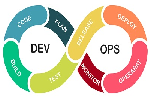Wecome To Linux
Linux Kernel system (file system)
OVERVIEW OF FILE SYSTEM HIERARCHY STANDARD (FHS)
Red Hat Enterprise Linux uses the Filesystem Hierarchy Standard (FHS) file system structure, which defines the names, locations, and permissions for many file types and directories.
The FHS document is the authoritative reference to any FHS-compliant file system, but the standard leaves many areas undefined or extensible. This section is an overview of the standard and a description of the parts of the file system not covered by the standard.
Compliance with the standard means many things, but the two most important are compatibility with other compliant systems and the ability to mount a /usr/ partition as read-only. This second point is important because the directory contains common executables and should not be changed by users. Also, since the /usr/ directory is mounted as read-only, it can be mounted from the CD-ROM or from another machine via a read-only NFS mount.
- 1. / Root
- - Every single file and directory starts from the root directory.
- - Only root user has write privilege under this directory.
- - Please note that /root is root users home directory, which is not same as /.
- 2. /bin User Binaries
- - Contains binary executables.
- - Common linux commands you need to use in single-user modes are located under this directory.
- - Commands used by all the users of the system are located here.
- For example: ps, ls, ping, grep, cp.
- 3. /sbin System Binaries
- - Just like /bin, /sbin also contains binary executables.
- - But, the linux commands located under this directory are used typically by system aministrator, for system maintenance purpose.
- For example: iptables, reboot, fdisk, ifconfig, swapon conf
- 4. /etc Configuration Files
- - Contains configuration files required by all programs.
- - This also contains startup and shutdown shell scripts used to start/stop individual programs.
- For example: /etc/resolv.conf, /etc/logrotate.conf
- 5. /dev Device Files
- - Contains device files.
- - These include terminal devices, usb, or any device attached to the system.
- For example: /dev/tty1, /dev/usbmon0
- 6. /proc Process Information
- - Contains information about system process.
- - This is a pseudo filesystem contains information about running process.
- For example: /proc/{pid} directory contains information about the process with that particular pid.
- - This is a virtual filesystem with text information about system resources.
- For example: /proc/uptime
- 7. /var Variable Files
- - var stands for variable files.
- - Content of the files that are expected to grow can be found under this directory.
- - This includes
- system log files (/var/log);
- packages and database files (/var/lib);
- emails (/var/mail);
- print queues (/var/spool);
- lock files (/var/lock);
- temp files needed across reboots (/var/tmp);
- 8. /tmp Temporary Files
- - Directory that contains temporary files created by system and users.
- - Files under this directory are deleted when system is rebooted.
- 9. /usr User Programs
- - Contains binaries, libraries, documentation, and source-code for second level programs.
- - /usr/bin contains binary files for user programs. If you cant find a user binary under /bin, look under /usr/bin. For example: at, awk, cc, less, scp
- - /usr/sbin contains binary files for system administrators. If you cant find a system binary under /sbin, look under /usr/sbin.
- For example: atd, cron, sshd, useradd, userdel
- - /usr/lib contains libraries for /usr/bin and /usr/sbin
- - /usr/local contains users programs that you install from source. For example, when you install apache from source, it goes under /usr/local/apache2
- 10. /home Home Directories
- - Home directories for all users to store their personal files.
- For example: /home/john, /home/nikita
- 11. /boot Boot Loader Files
- - Contains boot loader related files.
- - Kernel initrd, vmlinux, grub files are located under /boot
- For example: initrd.img-2.6.32-24-generic, vmlinuz-2.6.32-24-generic
- 12. /lib System Libraries
- - Contains library files that supports the binaries located under /bin and /sbin
- - Library filenames are either ld* or lib*.so.*
- For example: ld-2.11.1.so, libncurses.so.5.7
- 13. /opt Optional add-on Applications
- - opt stands for optional.
- - Contains add-on applications from individual vendors.
- - add-on applications should be installed under either /opt/ or /opt/ sub-directory.
- 14. /mnt Mount Directory
- - Temporary mount directory where sysadmins can mount filesystems.
- 15. /media Removable Media Devices
- - Temporary mount directory for removable devices.
- For examples, /media/cdrom for CD-ROM; /media/floppy for floppy drives; /media/cdrecorder for CD writer
- 16. /srv Service Data
- - srv stands for service.
- - Contains server specific services related data.
- For example, /srv/cvs contains CVS related data.
The DevOps seminar will help you to learn DevOps from scracth to deep knowledge of various DevOps tools such as fallowing List.
Kubernetes.Learn Latest Technologies

DevOps

AWS

Python

Azure

G Cloud

Linux

Web Tech

Data Bases

Testing

Git

Ansible

Chef

Kubernetes

HTML

CSS

